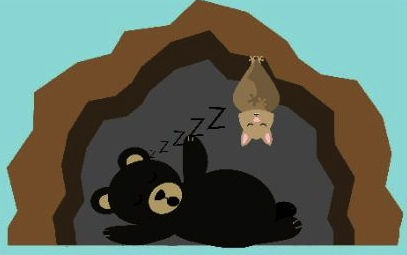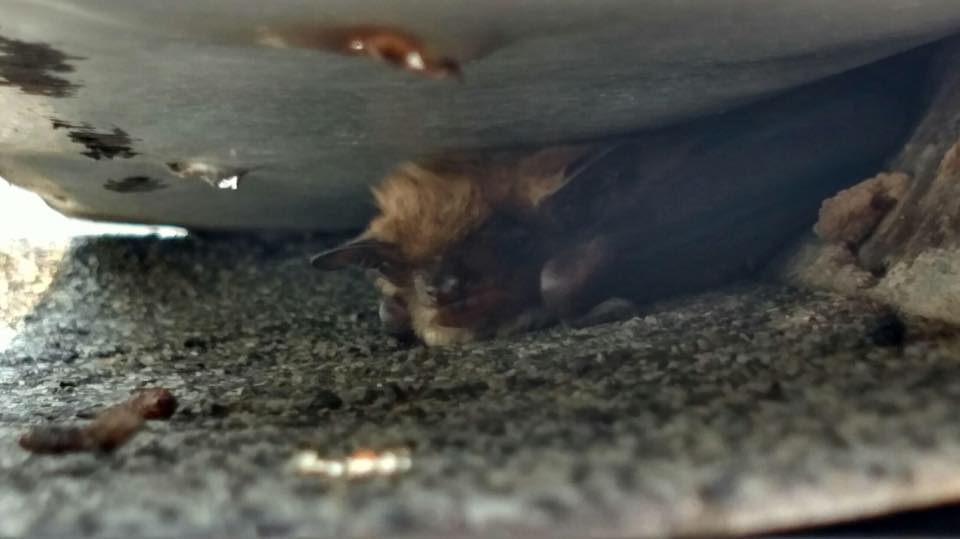
The common thing that most of us know about bats is that they sleep during the day and get out to hunt at night. Some people believe that bats attack and bite people. Despite obvious misconceptions about these nocturnal creatures, they are still very important to the environment because they control the insect population in a given area. This has prompted their protection as endangered animals, because many people kill bats and reduce their population thus bringing about an ecological problem.
It is a fact that bats are the only mammals capable of flight. Their females mostly given birth to one pup that is dependent on their mother until a time  when they can fly and fend for themselves. Males form small bachelor colonies and roost together, away from the females. Females also form maternity colonies, where they combine their efforts in raising their young and protecting them against predators. A maternal colony could get aggressive if you tried to get too close. One of the best things you can do for bats that are seeking shelter in your home is to wait for their young to grow before an exclusion procedure. Not only will you be doing a humane thing, but you will also be on the right side of the law by preventing the death of abandoned pups in your home.
when they can fly and fend for themselves. Males form small bachelor colonies and roost together, away from the females. Females also form maternity colonies, where they combine their efforts in raising their young and protecting them against predators. A maternal colony could get aggressive if you tried to get too close. One of the best things you can do for bats that are seeking shelter in your home is to wait for their young to grow before an exclusion procedure. Not only will you be doing a humane thing, but you will also be on the right side of the law by preventing the death of abandoned pups in your home.
To know when you can carry out the bat eviction process, it is imperative that you get some bat hibernation facts so you can learn more about bat behavior. Arming yourself with facts is always the first step you should take if you want to successfully control the presence of bats in your home. Let’s look at the activities that take place in a bat’s life for a year.
January Bat Activity
January is a cold winter month, meaning the bats are in hibernation. They look for a warm place to quietly roost, away from human activities. When bats are hibernating they lower their heart rate, metabolic rate, they slower their breathing and even lower their temperatures. A hibernating bat uses very little of its stored fats and could survive for a long time without any or very little movements.
February
February is still cold, but since the bats have used up most of their fat deposits, they could get out in warmer nights to replenish their supplies. When out, these bats look for food and water then return to their roosting place. Note that the bats are still in hibernation mode. So when customers ask us, “Where do bats go in the winter?” The answer is that if you had them in your attic in the summer you probably have a colony hibernating in your attic now.
these bats look for food and water then return to their roosting place. Note that the bats are still in hibernation mode. So when customers ask us, “Where do bats go in the winter?” The answer is that if you had them in your attic in the summer you probably have a colony hibernating in your attic now.
March Bats
With the approach of the third month of the year, the temperatures get a bit warmer. The bats begin to emerge in small numbers to feed during the night. The activities are however very limited, with the bats opting to stay in their roosting spots when the weather conditions are a bit too cold. We also found some of the info for March (and winter months) helpful from Bat Conservation Trust link.
April Bats Awake
April comes with a flurry of activities from the bats. They get active in most nights, catching and eating thousands of insects each. This is the month that they mostly utilize to get their energy levels back up again. However, they may still go back to hibernate when it gets cold.
May
With the temperatures pretty warm and tolerable in May, the bats are now fully active. Females start forming their maternal colonies and look for warm sheltered places to raise their young pups. During this month, most people would complain about noises in their homes as some maternal colonies find roosting spots in their attic or chimney. Other areas preferred by bats are thick tree barks and old weather beaten houses. As long as the place gives them a place that is away from predators and harsh weather conditions, the bats will most likely settle there. Bachelor colonies are a bit smaller and are rarely found in homes.
June
Female bats give birth in June. Their young depend on their mother’s milk. The pups are born very tiny and completely blind. Their mothers would go hunt at night then get back to suckle their young. A pup makes specific sounds that enables it to specifically communicate with its mother.
July
July sees the young pups continue to get bigger and stronger. At about 3 weeks some of these young can even practice flying. They are however still dependent on their mothers for milk. So during this time of year we are looking for signs of baby bats and nursing mothers.
August
 By August the young pups are about six weeks and can pretty much fly in and out of the roost on their own. By this time they can feed themselves so the maternal colonies begin to disperse. The male pups will look for bachelor colonies nearby while the female pups may still stick close to their mothers. During this month, the bats begin to look for mating roosts.
By August the young pups are about six weeks and can pretty much fly in and out of the roost on their own. By this time they can feed themselves so the maternal colonies begin to disperse. The male pups will look for bachelor colonies nearby while the female pups may still stick close to their mothers. During this month, the bats begin to look for mating roosts.
September
September is the mating month for bats. The males attract females by singing in a way that they hope would appeal to their female counterparts. A bat song is literally a combination of several clicking and chirping sounds and eventually the females chooses their mating partners.
October
October is still a mating month, but the bats also concentrate on eating a lot so they can gather up enough fats for hibernation in the approaching winter months. The bats also seek out places where they will be able to hibernate in peace. They could go to caves or old abandoned buildings in large numbers for warmth purposes.
If you have a bat in your home or business today. Call us at 248.403.8167. Or Visit our 24 hour emergency page.
November
In the month of November, most bats have begun their hibernation process. Some prefer to start saving their energy early while others are still trying to ensure that they have enough to last them through the cold winter months.
December
By the month of December the bats are in full hibernation mode. Some could be gathered in large numbers while others could stay in small groups. The bats rest for long periods of time, slowing down their bodily functions and wait out the existing frosty conditions.
One extremely interesting phenomenon is the ability of the female bat to store sperm after mating with the male, lasting through the hibernation months to allow for fertilization in summer. Hibernation is important because it gives the bats a chance to avoid extremely cold conditions which could see them dying in large numbers. They can comfortably save enough fat to last them through winter then emerge again in the warm months to start the whole process again. We can therefore say that hibernation is a very important process that ensures the continued survival of bats which is quite good for a balance in the ecological system.

Recent Comments